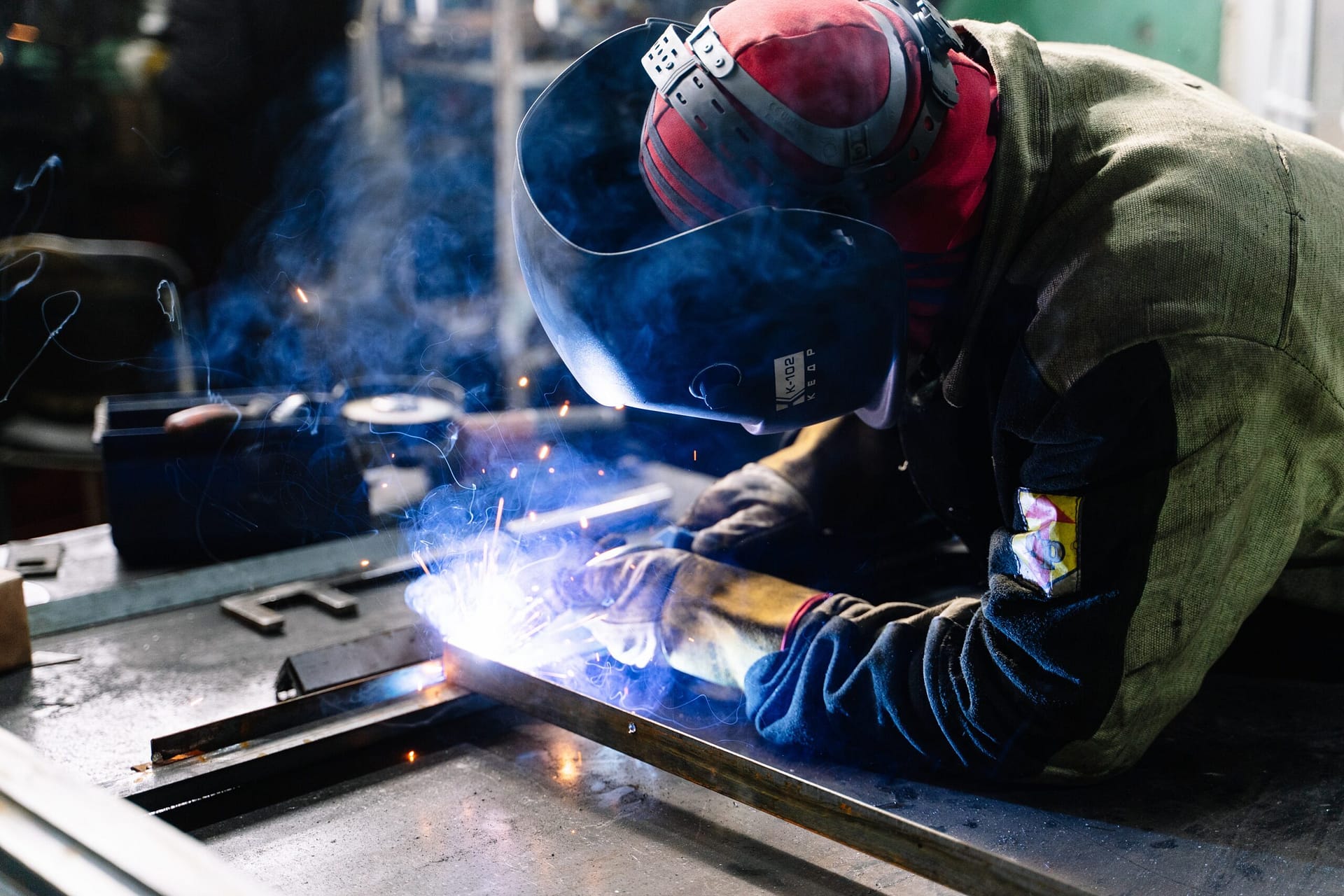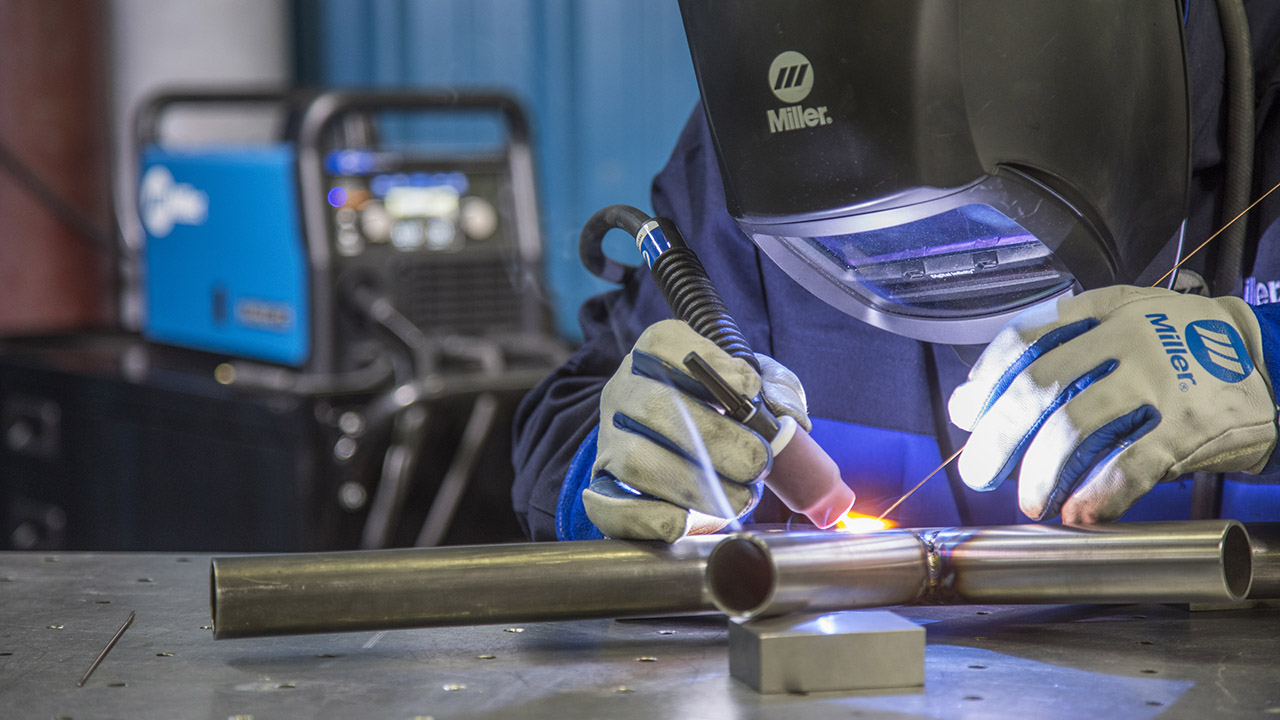Usual Welding Repair Issues and Exactly How to Address Them Properly
Welding repairs usually encounter a range of problems that can jeopardize the integrity of the end product. Common issues include poor penetration, porosity, and imbalance, to name a few. Each problem offers special obstacles that call for specific approaches for resolution. Understanding these issues is important for welders intending to improve their skills and outcomes. This discussion will check out these typical welding repair problems and effective techniques to address them.
Insufficient Infiltration
Poor infiltration occurs when the weld metal fails to totally fuse with the base product, leading to weak joints and potential architectural failings. This concern typically comes from not enough warmth input, inaccurate electrode angle, or inappropriate welding speed. Welders may encounter insufficient infiltration due to a miscalculation of the necessary parameters for a certain material thickness or kind. Furthermore, contamination on the base material's surface area can impede effective bonding, worsening the problem. To resolve poor infiltration, welders ought to guarantee suitable setups on their devices and keep a clean work surface area. Normal assessment of welds is suggested to determine any kind of deficiencies early, enabling timely improvements and the avoidance of endangered architectural honesty in bonded settings up.
Porosity
Porosity is an usual flaw in welded joints that manifests as little gas bubbles caught within the weld steel. This flaw can compromise the stability of the weld, leading to minimized stamina and possible failing under anxiety. Belgrade Fabrication. Porosity usually occurs from contamination, dampness, or incorrect welding strategies, which allow gases to run away right into the liquified weld swimming pool. To address porosity, welders must assure proper surface prep work, maintain a tidy workplace, and make use of ideal welding criteria. In addition, choosing the right filler material and shielding gas can reduce gas entrapment. Routine evaluation and testing of welds can assist determine porosity early, guaranteeing prompt restorative actions are taken, thus protecting the top quality and integrity of the bonded framework
Misalignment
Misalignment in welding can occur from different elements, consisting of inappropriate setup and thermal expansion. Comprehending the source is essential for effective resolution. Several improvement techniques are offered to straighten components and guarantee architectural stability.
Sources of Misalignment
Welding imbalance usually originates from a variety of underlying problems that can jeopardize architectural stability. One key cause is incorrect fit-up of components prior to welding, which can cause gaps and irregular surfaces. Variants in thermal growth throughout the welding procedure can also lead to distortion, specifically if the materials being signed up with have different coefficients of expansion. Furthermore, poor fixturing and securing may fall short to hold elements securely in place, leading to movement throughout welding. Inadequately conserved tools, consisting of welding devices and devices, might introduce inconsistencies in the weld bead, further adding to imbalance. Operator mistake, stemming from insufficient training or experience, can likewise play a substantial duty in creating misaligned welds.

Modification Methods Available
Attending to imbalance effectively needs a combination of corrective techniques customized to the particular concerns available. One common method is the usage of components or jigs to hold parts in the proper setting throughout welding, making certain consistent positioning. In addition, preheating the products can assist reduce distortion and boost fit-up. For significant misalignment, mechanical realignment strategies, such as utilizing hydraulic jacks or clamps, can be utilized to remedy the placement prior to welding. Post-weld warmth therapy might also be required to relieve tensions triggered by misalignment. Mindful inspection and modification throughout the configuration stage can protect against misalignment concerns from coming to be substantial issues, advertising a smoother welding process and improving general architectural honesty.
Distortion
Distortion is a typical challenge in welding that can develop from different factors, including irregular cooling and heating. Comprehending the reasons for distortion is essential for executing reliable prevention techniques. Resolving this concern not just boosts architectural integrity yet also improves the general quality of the weld.
Causes of Distortion
When based on the extreme warmth of welding, materials usually undertake adjustments that can result in distortion. This phenomenon largely occurs from thermal expansion and contraction during the welding procedure. As the weld location warms up, the material increases; upon cooling, it acquires, which can develop interior tensions. On top of that, irregular home heating throughout a workpiece can exacerbate these tensions, causing warping or bending. The sort of product likewise plays a considerable function; steels with differing thermal conductivity and coefficients of expansion might react in a different way, causing uncertain distortions. Moreover, inadequate joint style and insufficient fixturing can add to misalignment during welding, increasing the probability of distortion. Understanding these causes is vital for effective welding repair and prevention strategies.
Avoidance Techniques
Reliable avoidance methods for distortion throughout welding concentrate on regulating heat input and making certain correct joint layout. Preserving a regular warm input helps to minimize thermal expansion and tightening, which can bring about distortion. Using methods such as preheating the workpiece can also minimize the temperature level gradient, promoting uniform heating. In addition, choosing appropriate joint layouts, such as T-joints or lap joints, can boost security and decrease stress focus. Carrying out correct fixturing to protect the workpieces in position further help in maintaining placement throughout the welding process. Staggered welding sequences can disperse warmth much more equally, avoiding local distortion. By using these strategies, welders can considerably lower the possibility of distortion and improve the total top quality of their welds.
Breaking
Cracking is a common problem come across in welding repair services, frequently resulting from various factors such as inappropriate air conditioning rates, material selection, or inadequate joint prep work. The incident of cracks can greatly endanger the stability of the weld, resulting in potential failures throughout operation. To address this problem, welders should first examine the source, ensuring that products are compatible and properly selected for the details application. Furthermore, regulating the air conditioning rate during the welding process is best welder for aluminum necessary; quick cooling can cause anxiety and cause fracturing. Appropriate joint design and preparation likewise add to lessening the risk. Implementing these approaches can enhance weld high quality and durability, eventually minimizing the likelihood of splitting in completed weldments.

Incomplete Fusion
A substantial concern in welding repairs is incomplete fusion, which happens when the weld steel does not appropriately bond with the base product or previous weld passes - Belgrade Welding. This defect can cause weaknesses in the joint, potentially jeopardizing the stability of the bonded structure. Factors adding to insufficient fusion consist of not enough warmth input, improper welding method, and contamination of the surfaces being signed up with. To resolve this concern successfully, welders ought to guarantee appropriate pre-weld cleaning and surface area preparation, in addition to change their welding parameters to attain adequate penetration and fusion. Regular assessment during the welding process can additionally help identify incomplete combination early, allowing for prompt corrective measures to improve the overall top quality of the weld
Overheating
While welding repair work can improve structural integrity, overheating offers a substantial difficulty that can result in product deterioration. Too much warmth throughout welding can modify the mechanical residential or commercial properties of metals, leading to lowered strength, increased brittleness, and bending. This phenomenon is especially vital in high-stress applications where architectural reliability is paramount. Determining overheating can involve visual assessments for discoloration or distortion, as well as monitoring temperature throughout the welding procedure. To alleviate the dangers connected with overheating, welders need to employ ideal methods, such as managing heat input, readjusting travel speed, and making use of suitable filler products. In addition, carrying out pre- and post-weld warmth therapies can help bring back material residential or commercial properties and improve the overall high quality of the repair service, guaranteeing long-term performance and safety and security.
Often Asked Questions
What Are the Usual Signs of a Welding Issue?

How Can I Evaluate My Welds for Top quality?
To evaluate welds for high quality, one can use aesthetic evaluations, ultrasonic screening, and radiographic approaches. Each method guarantees architectural integrity, determines issues, and verifies adherence to defined standards, ultimately improving the dependability of the bonded joints.
What Safety Precautions Should I Take While Welding?
When welding, one must focus on safety and security by putting on suitable personal protective equipment, making certain appropriate ventilation, safeguarding flammable materials away, maintaining a clean work space, and recognizing surroundings to stop injuries and mishaps.
Can I Fix a Weld Without Redesigning the Entire Joint?
Repairing a weld without redesigning the entire joint is feasible, relying on the damages (Montana Mobile Welding and Repair Fabrication). Techniques such as grinding, including filler material, or utilizing a welding procedure can properly address particular flaws while maintaining the surrounding framework
What Equipment Are Essential for Efficient Welding Fixes?
Necessary tools for efficient welding repairs consist of a welding maker, cord brush, grinder, protective equipment, clamps, and filler products. Each device plays a vital role in ensuring quality and security during the fixing process. Porosity normally develops from contamination, dampness, or improper welding techniques, which enable gases to leave right into the liquified weld pool. Poorly kept equipment, including welding devices and devices, might present variances in the weld grain, additional adding to misalignment. When subjected to the extreme warmth of welding, materials frequently undertake modifications that can lead to distortion. Splitting is an usual issue come across in welding repair services, often resulting from numerous aspects such as improper cooling prices, product option, or inadequate joint prep work. A substantial problem in welding repairs is insufficient combination, which happens when the weld metal does not effectively bond with the base material or previous weld passes.